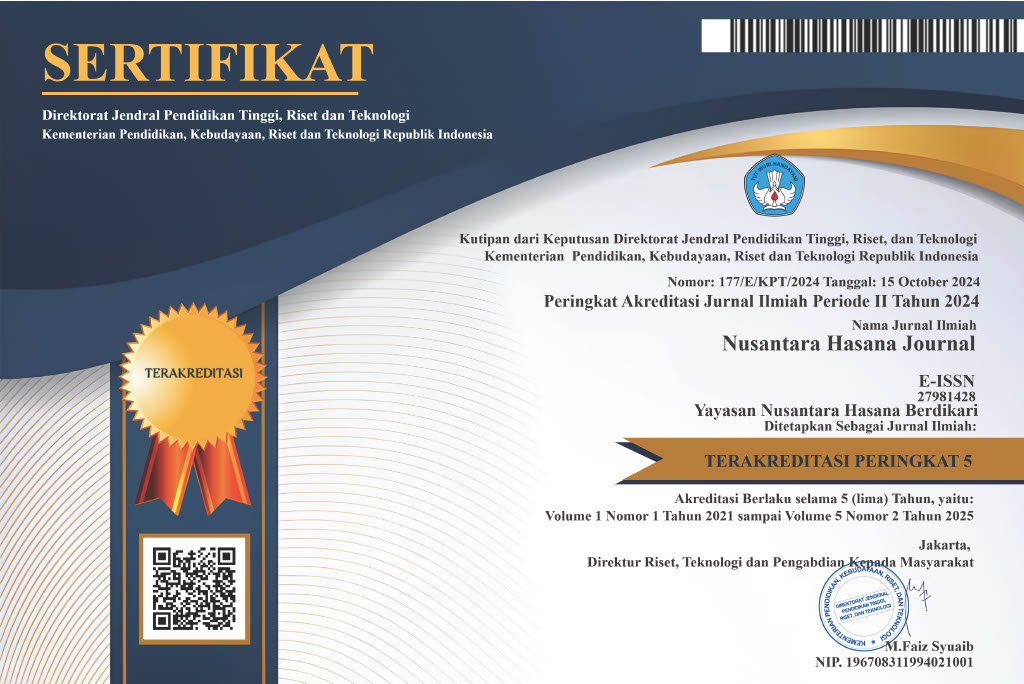SISTEM IMUNITAS ALAMIAH DAN SISTEM IMUNITAS ADAPTIF
Keywords:
adaptive immunity, innate immunity, microbial, nonspecific, specificAbstract
The immune system is a collection of immune cells found in the blood and lymph fluid, in tissues and organs that work together to protect the body against attack by foreign substances, such as microbes (bacteria, fungi, and parasites), viruses, cancer cells, and toxins. The immune system is very complex, which can recognize and remember millions of different foreign substances. Immunity or resistance to infection is obtained from the activity and intact function of two closely related systems, namely the innate immune system and the acquired immune system (adaptive immune system). Exterior defenses, such as skin and mucous membranes, phagocytic leukocytes and serum proteins are elements of the innate immune system, which act nonspecifically against foreign substances or cells without having to recognize a specific identity. The adaptive immune system differs from the innate immune system, depending on the specific recognition by lymphocytes of foreign substances or cells. Understanding the functional interactions between the innate and adaptive immune systems is very important in future disease investigations and therapeutics.
Downloads
References
Abel, A. M., Yang, C., Thakar, M. S., & Malarkannan, S. (2018). Natural Killer Cells: Development, Maturation, and Clinical Utilization. Frontiers in immunology, 9, 1869.
Barrett, K.E., Barman, S.M., Boitano, S., Brooks, H. (2019). Ganong's Review of Medical Physiology. 26th ed. McGraw-Hill Medical, New York.
Clark, R., and Kupper, T. (2005). Old Meets New: The Interaction Between Innate and Adaptive Immunity. Journal of Investigative Dermatology, 125, 629–637.
Guyton, A.C., and Hall, J.E. (2021). Guyton and Hall Textbook of Medical Physiology. 14th ed. Elsevier: Philadelphia.
Iwasaki, A., and Medzhitov, R. (2015). Control of adaptive immunity by the innate immune system. Nature Immunology, 16 (4), 343-353.
Kobayashi, T., Naik, S., & Nagao, K. (2019). Choreographing Immunity in the Skin Epithelial Barrier. Immunity, 50(3), 552–565.
Riera Romo, M., Pérez-Martínez, D., & Castillo Ferrer, C. (2016). Innate immunity in vertebrates: an overview. Immunology, 148(2), 125–139.
Sayour, E.J., and Mitchell, D.A. (2015). Manipulation of Innate and Adaptive Immunity through Cancer Vaccines. Journal of Immunology Research 2017, ID 3145742.
Sembulingan, K., and Sembulingan, P. (2012). Essentials of Medical Physiology. 6th ed. Jaypee Brothers Medical Publishers, New Delhi.
Shepherd, F. R., & McLaren, J. E. (2020). T Cell Immunity to Bacterial Pathogens: Mechanisms of Immune Control and Bacterial Evasion. International journal of molecular sciences, 21(17), 6144.
Tate, P. (2012). Seeley’s Principles of Anatomy & Physiology 2nd ed. McGraw-Hill, New York.
Tortora, G.J., and Derrickson, B. (2014). Principles of Anatomy & Physiology. 14th ed. Wiley, Hooboken.
Warrington, R., Watson, W., Kim, H.L., Antonetti, F.R. (2011). An introduction to immunology and immunopathology. Allergy Asthma Clinical Immunology, 7(Suppl 1),S1.
Widmaier, E., Raff, H., Strang, K. (2019). Vander's Human Physiology: The Mechanisms of Body Function 15th ed. McGraw-Hill, Boston.
Downloads
Published
How to Cite
Issue
Section
License
Copyright (c) 2022 Dian Rahadianti

This work is licensed under a Creative Commons Attribution-ShareAlike 4.0 International License.
NHJ is licensed under a Creative Commons Attribution-NonCommercial-ShareAlike 4.0 International License.
Articles in this journal are Open Access articles published under the Creative Commons CC BY-NC-SA License This license permits use, distribution and reproduction in any medium for non-commercial purposes only, provided the original work and source is properly cited.
Any derivative of the original must be distributed under the same license as the original.
























